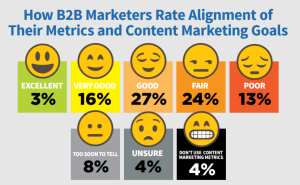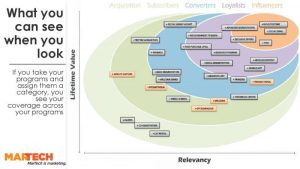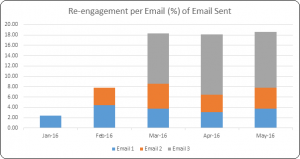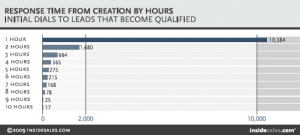I’ve built email campaigns at a few companies in the past and everyone does it a little differently. Some teams give their copywriters a pre-designed template and word count to write around. Others prefer to create the copy first and fill out a design brief. Which leads me to this chicken-and-egg question: what’s the best way to approach an email campaign? Do you create content first or design first? I explored this question with the help of a few industry pros:
Everything revolves around the call-to-action
Digital marketing professional Lauren Jewell says that she starts the call-to-action when planning out her campaign structure, “Ultimately, it’s [the] communication of a message and/or an action I am trying to inspire which is why I think it should lead.“ she says.
Putting the key message first means putting your customers first. It ensures you’re always listening for feedback and adding value. Regularly asking about needs and preferences (and delivering them) is the foundation of any strong customer-brand relationship. After all, research shows that 70% of buying experiences are based on how a customer feels they are being treated.
Twist’s welcome email below is a great example of how design helps emphasize the key action point. The call-to-action, introduction to their product, is clearly highlighted with a larger image that takes up the above-the-fold space. The call to action button is also in a branded purple, drawing your eye to click and learn more.
Design supplements content
In fact, drafting content first helps you create more impactful designs. “Design for the sake of design is pointless, ” Mailjet Designer Yann Skargovskii explains, “Design is here to emphasize content, not to emphasize itself. Good design is invisible.”
In the case of call-to-actions, an eye-catching design for a 50% off flash sale would be very different from a product launch. Litmus Builder’s launch email is a great example of how design helps highlight the key message. The two dated red and white calendars bring your eye towards the virtual product tour sign up. The grid below also cleanly highlights customer testimonials, with a larger dark testimonial banner at the bottom that complements the header banner.
“There’s often a desire to say too much per piece; it’s a constant education with colleagues and clients to keep it digestible. Often, design ideas…will fall out of this process too,” Lauren says. There’s a give and take relationship between design and content. Where content can’t concisely convey, design steps in. Balancing content and design keeps your email short, actionable, and engaging. And that is the formula to winning over your reader.
Keep the communication flowing
Ultimately, our exploration of email creation best practices brings us back to the root of the question. “Content or design first?” hints at a larger dynamic that’s been in play for years now. Many design and content teams work on separate parts of a project and don’t communicate until it’s time to put two-and-two together. This disconnected workflow creates unaligned views on which comes first. It’s incredibly difficult to bring the two together if there isn’t clear communication from the beginning.
Content and design teams should connect at the beginning of each new email project to build a clear understanding of the audience and message.
From our discussions, we’ve come to the conclusion that there is no absolute formula to email creation. Both content and design should be considered from the beginning. A punny headline can be taken to a whole new level with a viral GIF. But in order to do so, both teams need to put their heads together.
So what do you think? Which comes first? Design or content? Let us know how you approach email creation by leaving a comment below!
(138)










